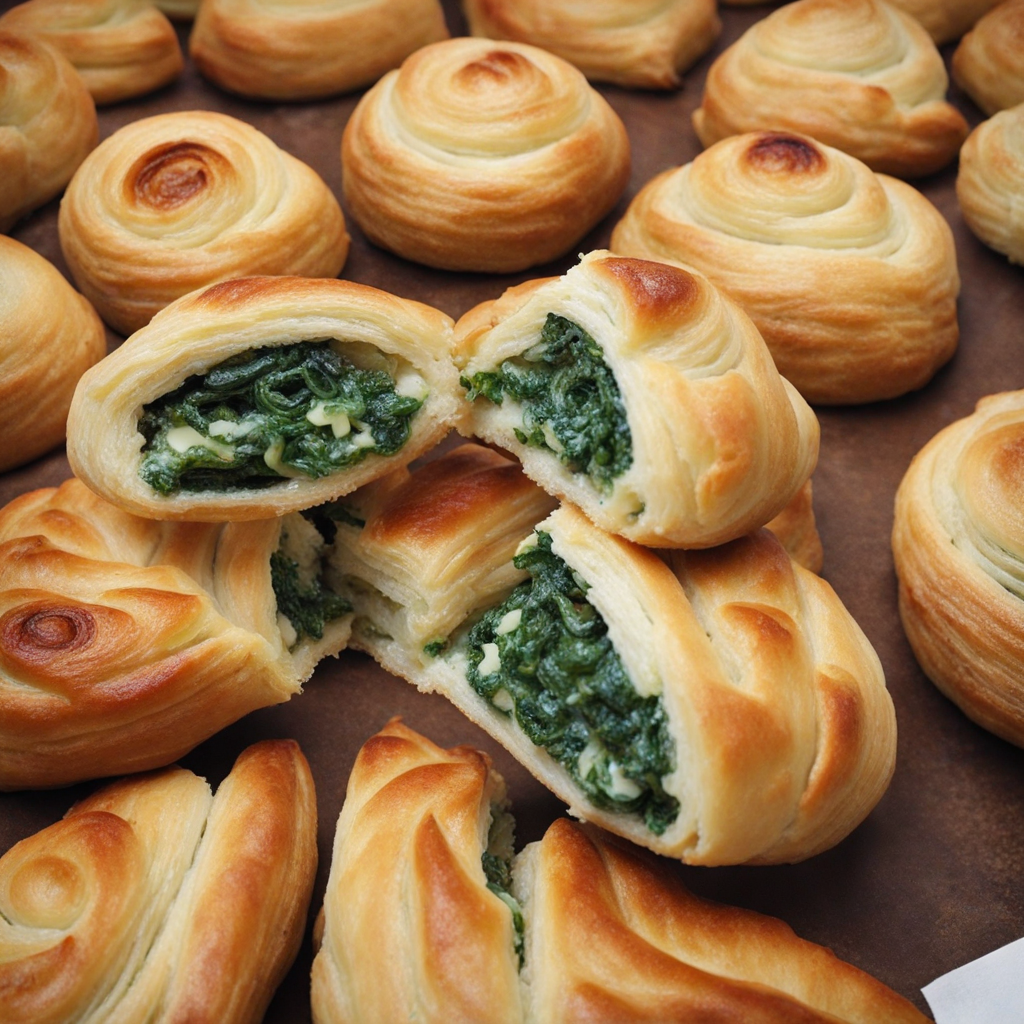Pumpkin Pie
Pumpkin pie, a beloved dessert in North Macedonia, is a delightful representation of the region's rich culinary traditions. This dish features a buttery, flaky crust that cradles a creamy filling made primarily from roasted pumpkin, often sweetened with sugar and flavored with warm spices like cinnamon, nutmeg, and cloves. The balance of the spices adds depth to the natural sweetness of the pumpkin, creating a harmonious blend that tantalizes the taste buds. The use of local pumpkins, which are known for their vibrant color and rich flavor, enhances the authenticity of the pie, making it a cherished seasonal treat, especially during autumn and winter festivities. As you take a bite of North Macedonian pumpkin pie, you'll experience the comforting warmth of spices that evoke a sense of nostalgia and home. The filling is often smooth and velvety, with a slight earthiness from the pumpkin that pairs beautifully with the sweet notes. The crust, baked to a golden perfection, adds a delightful crunch that contrasts with the soft filling. Many families have their own secret recipes passed down through generations, which can include variations such as the addition of walnuts or honey, making each pie a unique emblem of personal and cultural heritage. Served slightly warm, this pie is often accompanied by a dollop of whipped cream or a scoop of vanilla ice cream, which elevates the experience further. It's not just a dessert; it's a celebration of the harvest and an invitation to gather around the table with loved ones. In North Macedonia, enjoying pumpkin pie is more than just tasting a dish; it’s about indulging in a tradition that brings people together, sharing stories and laughter, making every slice a cherished memory.
How It Became This Dish
The History of Тиквеник: A Culinary Gem of North Macedonia #### Origins of Тиквеник Тиквеник, a beloved traditional dish from North Macedonia, is a pumpkin-filled pastry that embodies the rich agricultural heritage and culinary traditions of the region. Its name derives from the word "тиква," meaning pumpkin in Macedonian. The origins of тиквеник can be traced back to the rural communities of North Macedonia, where the abundance of pumpkins during harvest time inspired local cooks to create a dish that celebrates this seasonal bounty. Pumpkins have been cultivated in the Balkans for centuries, introduced to the region through trade routes and agricultural exchanges. The versatility of pumpkin made it a staple in peasant diets, particularly during the autumn months when it was harvested. In the past, families would gather in the kitchen to prepare тиквеник, turning the act of cooking into a communal event that fostered familial bonds and cultural identity. #### Cultural Significance The cultural significance of тиквеник extends far beyond its delicious taste. It is often associated with traditional celebrations, especially during the autumn harvest festivals, when communities come together to give thanks for the bounty of the land. In these gatherings, тиквеник is not merely a dish; it is a symbol of unity, resilience, and the agrarian roots of Macedonian culture. In many households, the preparation of тиквеник involves generations of knowledge passed down from mothers to daughters. Each family may have its own secret recipe or unique twist on the traditional dish, leading to a rich variety of flavors and textures across the region. This emphasis on family recipes reinforces the importance of heritage and the art of cooking, which is deeply embedded in the Macedonian way of life. #### Ingredients and Preparation Traditionally, тиквеник is made with a simple yet flavorful filling of grated pumpkin, sugar, and spices such as cinnamon and nutmeg. Some variations may include nuts or raisins, adding depth and texture to the dish. The pastry itself is typically made from thin layers of dough, similar to phyllo, which are brushed with oil or melted butter to create a flaky, golden crust. The preparation of тиквеник can be a labor-intensive process. It often begins with the careful selection of the pumpkin, preferably one that is sweet and ripe. After grating the pumpkin, it is combined with sugar and spices, and the mixture is allowed to rest, allowing the flavors to meld. The dough is then rolled out into thin sheets, layered, and filled with the pumpkin mixture before being baked to perfection. While the traditional recipe remains cherished, modern interpretations have emerged that incorporate contemporary ingredients and techniques. For instance, some cooks may use store-bought pastry for convenience or experiment with different types of fillings, such as sweet potatoes or even savory versions with cheese. #### Development Over Time As North Macedonia has evolved, so too has the dish of тиквеник. With the advent of globalization and the influence of culinary trends from around the world, the traditional recipe has seen adaptations that reflect changing tastes and lifestyles. Urbanization has led to a shift in food preparation, with many opting for quicker and easier methods. Yet, despite these changes, the essence of тиквеник remains intact. It continues to be a staple in Macedonian households, especially during festive occasions such as Christmas and Easter, where it is often served alongside other traditional dishes. The dish also plays a role in cultural identity for Macedonians living abroad, serving as a link to their roots and a means of celebrating their heritage. Moreover, the resurgence of interest in traditional and regional cuisines has brought тиквеник back into the spotlight. Food festivals and culinary events across North Macedonia showcase this dish, allowing both locals and tourists to experience its flavors and learn about its significance. As a result, тиквеник is gaining recognition not just as a home-cooked comfort food but also as a culinary treasure that deserves its place on the global stage. #### Modern Revival and Global Recognition In recent years, there has been a renewed interest in traditional Macedonian cooking, with chefs and food enthusiasts celebrating the region's unique flavors and ingredients. Restaurants focusing on authentic Balkan cuisine are increasingly featuring тиквеник on their menus, drawing attention to its cultural heritage and introducing it to a wider audience. Social media has further propelled this revival, as home cooks share their тиквеник creations online, complete with recipes and tips. This digital platform has created a sense of community among those who cherish traditional cooking, allowing for the exchange of ideas and innovations while preserving the foundational elements of the dish. #### Conclusion Тиквеник is more than just a dish; it is a reflection of North Macedonia's agricultural history, cultural identity, and communal spirit. From its humble beginnings in rural kitchens to its modern-day adaptations, the journey of тиквеник illustrates the enduring connection between food and culture. As it continues to evolve, this beloved pastry remains a symbol of tradition, family, and the celebration of the harvest, ensuring its place in the hearts and homes of Macedonians for generations to come. In embracing both its historical roots and modern interpretations, тиквеник stands as a testament to the resilience of culinary traditions in the face of change. Whether enjoyed at a family gathering, a festive celebration, or a restaurant, this delightful pumpkin pastry serves not only to satiate hunger but also to nourish the spirit, reminding us of the power of food to connect us to our past and to one another.
You may like
Discover local flavors from North Macedonia







